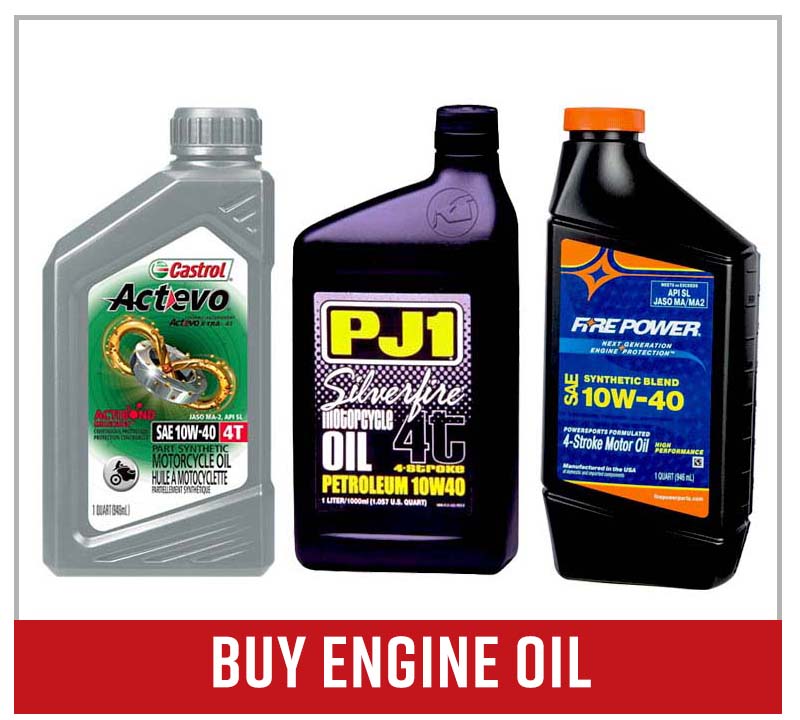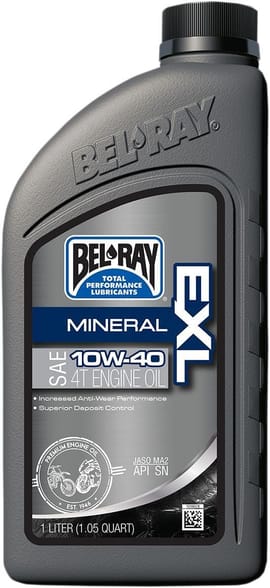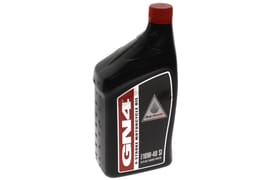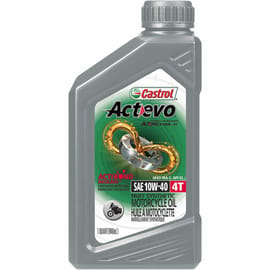What Motorcycle Engine Oil Should I Use?
Whether you're a "do-it-yourself" type or you have somebody else change it for you, it's good to know what kind of oil your motorcycle needs.
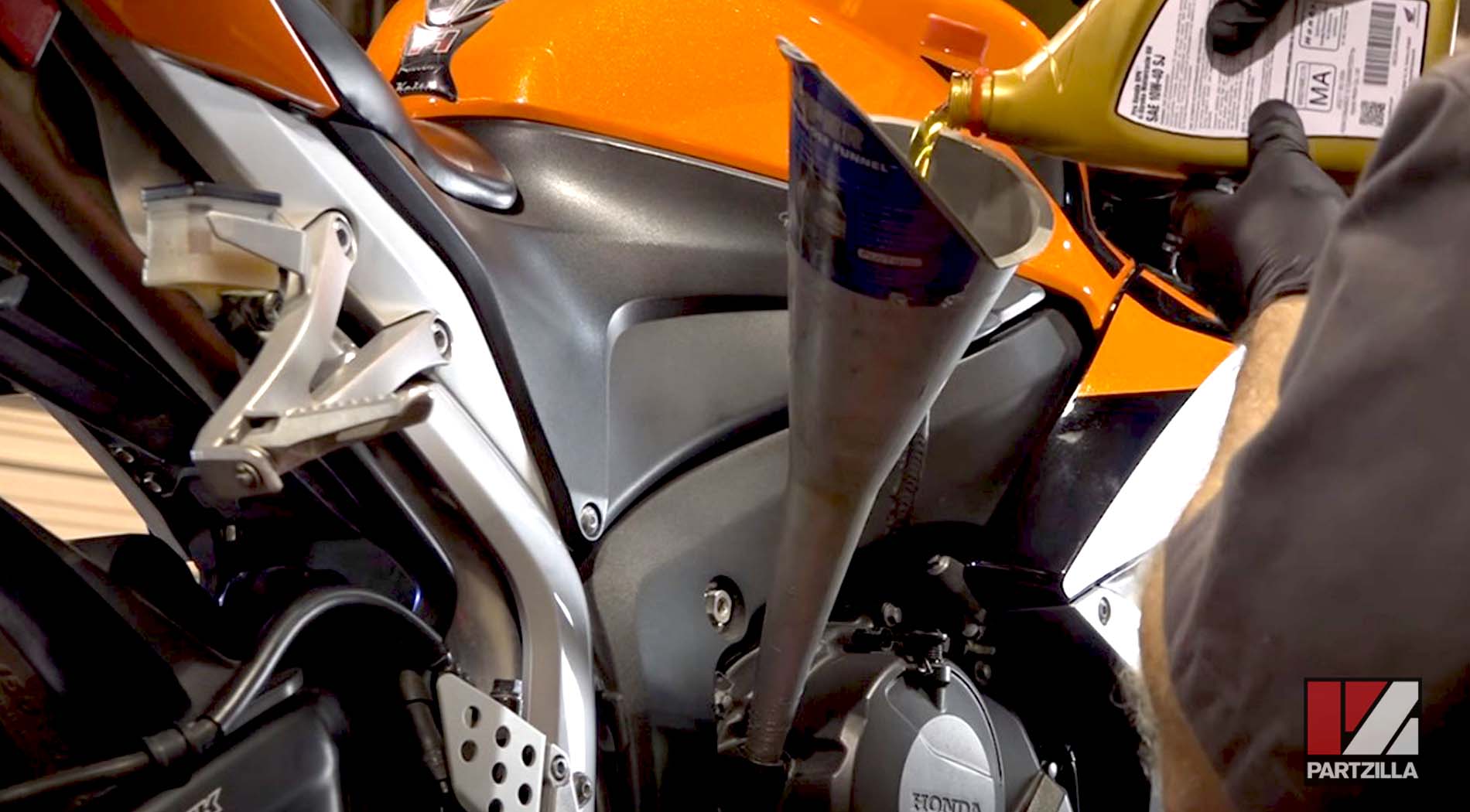
When it comes to the products available for your motorcycle's oil changes, the choices are endless. Petroleum oils, synthetic oils, and the stuff somewhere in between give you plenty of options to choose from. Here's what to consider when you're changing the oil on your motorcycle.
Types of Motorcycle Engine Oil
There are three basic types of motor oil defined by what's in them, and they differ in how they protect your engine:
- Synthetic Motorcycle Oil — These oils are man-made, using very exacting processes. Synthetic oils include additives to increase their effectiveness, which helps them reduce friction and prevent breakdown of the oil. They also flow through the engine a little better and leave behind less engine deposits.
- Synthetic Blend Motorcycle Oil — A synthetic blend oil offers a little bit of the benefits of synthetics mixed with a more conventional oil. These oils perform well at low temperatures (like on startup). They also offer additional protection against oxidation in the engine.
- Conventional Motorcycle Oil — Some call them conventional oils; some call them mineral oils; some call them dyno oils. Conventional oil is made just like you might imagine: crude oil is pulled from the ground and then refined. It's mostly natural, and isn't enhanced by the additives found in synthetic lubricants.
Synthetic Oils
The technology used to create today's synthetic oils is highly sophisticated. Essentially, today's synthetics are designer oils, with properties perfectly tailored to their application. There are two basic types of synthetic motorcycle oil: Class III and Class IV. Class III synthetics are mineral oils based on petroleum stocks, and Class IV synthetics are built from the bottom up in the lab. In many cases, a synthetic can outperform its genuine-article cousin.

Like any product that's a little different, there's skepticism about synthetics, for good reason. Years ago, there were seal compatibility issues with synthetic oils. In other words, they'd leak, but not anymore. Another issue was that synthetics didn't allow engines to break in properly. But again, not anymore. A lot of motorcycles now come filled with synthetics straight from the factory, so don't be afraid of them. But if the manufacturer of your machine recommends conventional oil, heed their advice.
What Do the Numbers on Motor Oil Mean?
Many people believe the "W" in the formula number for motor oils stands for "Weight." However, it stands for "Winter." These numbers are derived from a test in which the oil is heated to a certain temperature and then timed as it drains out of a hole with a specific diameter. The lower the time, the lower the number and the lower the viscosity.
Your engine's oil should be thin enough when it's cold to circulate during cold starts, but also thick enough to protect the engine when it's running hot. As temperature rises, viscosity falls, and oil gets thinner and flows easier. Therefore, the first and second number in a 10W-40 oil represents a balance between being thin enough to be effective when you start the motor in winter, but also thick enough to stick to and protect components in summer heat.

So, What Oil Should I Put in My Motorcycle?
As far as the weight goes and for choosing between a synthetic, a blend, or a petroleum oil, go with the manufacturer's recommendation. However, if the manufacturer isn't specific and says that any oil will work, don't be afraid to try synthetics.
